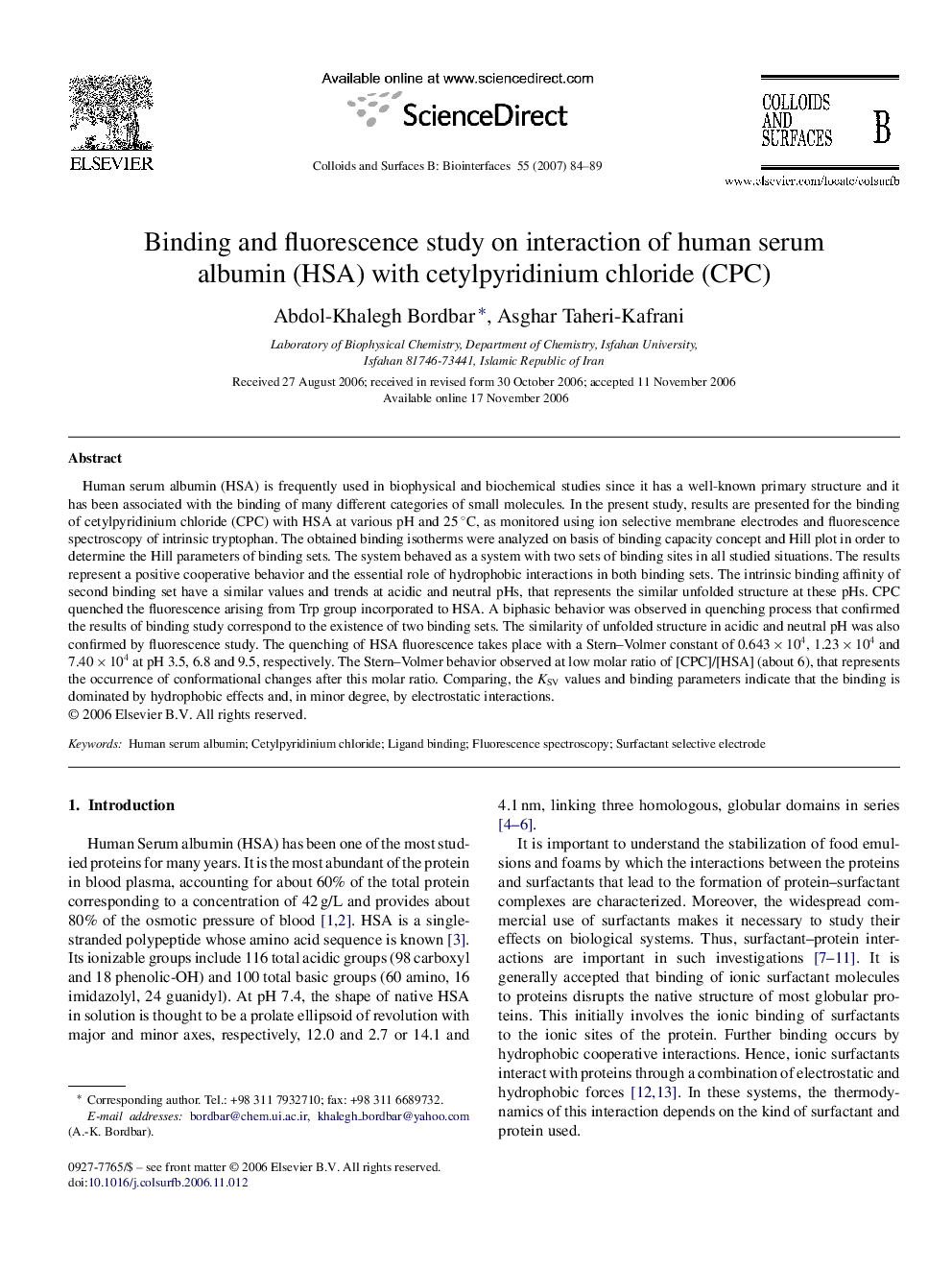| کد مقاله | کد نشریه | سال انتشار | مقاله انگلیسی | نسخه تمام متن |
|---|---|---|---|---|
| 602799 | 879994 | 2007 | 6 صفحه PDF | دانلود رایگان |

Human serum albumin (HSA) is frequently used in biophysical and biochemical studies since it has a well-known primary structure and it has been associated with the binding of many different categories of small molecules. In the present study, results are presented for the binding of cetylpyridinium chloride (CPC) with HSA at various pH and 25 °C, as monitored using ion selective membrane electrodes and fluorescence spectroscopy of intrinsic tryptophan. The obtained binding isotherms were analyzed on basis of binding capacity concept and Hill plot in order to determine the Hill parameters of binding sets. The system behaved as a system with two sets of binding sites in all studied situations. The results represent a positive cooperative behavior and the essential role of hydrophobic interactions in both binding sets. The intrinsic binding affinity of second binding set have a similar values and trends at acidic and neutral pHs, that represents the similar unfolded structure at these pHs. CPC quenched the fluorescence arising from Trp group incorporated to HSA. A biphasic behavior was observed in quenching process that confirmed the results of binding study correspond to the existence of two binding sets. The similarity of unfolded structure in acidic and neutral pH was also confirmed by fluorescence study. The quenching of HSA fluorescence takes place with a Stern–Volmer constant of 0.643 × 104, 1.23 × 104 and 7.40 × 104 at pH 3.5, 6.8 and 9.5, respectively. The Stern–Volmer behavior observed at low molar ratio of [CPC]/[HSA] (about 6), that represents the occurrence of conformational changes after this molar ratio. Comparing, the KSV values and binding parameters indicate that the binding is dominated by hydrophobic effects and, in minor degree, by electrostatic interactions.
Journal: Colloids and Surfaces B: Biointerfaces - Volume 55, Issue 1, 15 March 2007, Pages 84–89